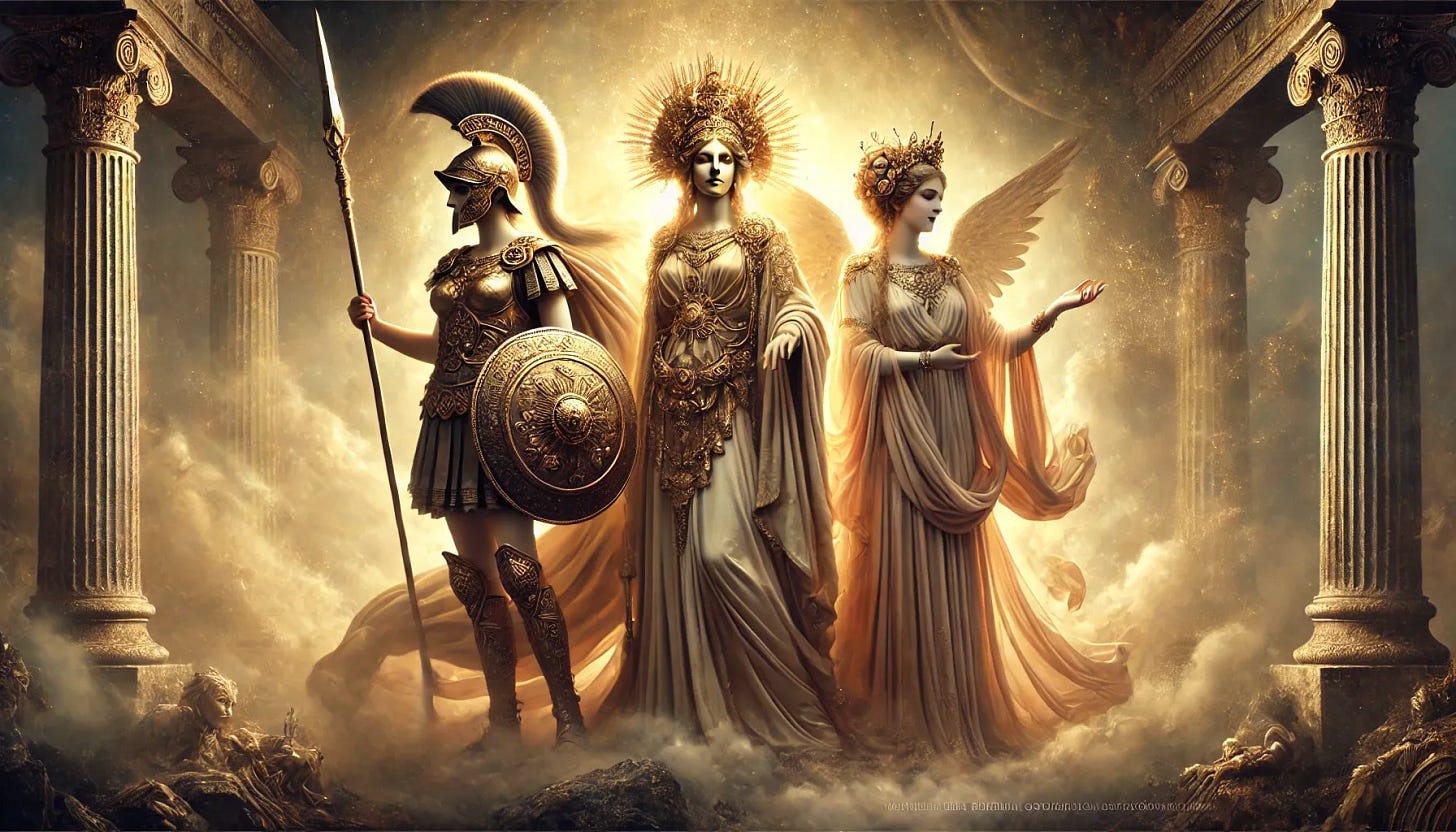Athena, Hera, and Aphrodite as Prefigurations of Revelation
The Three Harbingers of Being

Athena, Hera, and Aphrodite stand at the clearing of Being as embodiments of wisdom, majesty, and divine love in their primordial form ‘in time.’ They belong ‘in time’ to the world before calculative metaphysics, to the pre-Socratic reality where Being was still experienced as something unconcealed, rather than something analyzed, categorized, or systematized. They are not mere subjective objects of our imagination, nor, conversely, are they ‘entities’ in the world. They are poetic, artistic heralds of wisdom, majesty, and divine love yearning for fulfillment in Jesus Christ and the Catholic Church. Athena, Hera, and Aphrodite stand as shimmering echoes in the liminal space where the created reaches for the uncreated in the language of embodied, poetic expression.
It is in this space—this liminal realm of early Greek thought—that their significance emerges. They are not relics of a bygone mythology, nor are they mere poetic abstractions. They are ‘timeless’ heralds that embody the very forces that shape Being ‘in time’:
Athena as wisdom, not merely as intellectual, metaphysical knowledge, but as the gleaming presence of insight that shapes our world.
Hera as sovereignty, not as the bureaucratic rule of men, but as the shimmering divine order that grants structure to the world.
Aphrodite as love, not as fleeting desire, but as the radiant and binding force that draws all things into harmony.
‘In time,’ they are harbingers of Being, figures who illuminate the structure of existence in its deepest sense. They do not stand in opposition to eternal Christianity but prefigure it, bearing witness ‘in time’ to the emergence of Being that finds its eternal fulfillment in Christ.
To contemplate them is to participate in an act of retrieval, to return to a world where Being was revealed rather than veiled—where wisdom, majesty, and love were not abstracted into metaphysical concepts but were known through presence and encounter.
Thus, my engagement with these figures is not an indulgence in nostalgia, nor a mere revival of classical thought. It is a way of encountering what has been forgotten in the unfolding of time leading to the revelation of Christ, of drawing from the depths of myth and philosophy to glimpse the light of our salvation in Christ alone. They stand, as they always have, at the edge of revelation as shining beacons for those who seek to see.
Enjoy “The Dawn of the Three” from my album Mythic Revelations. Lyrics ©Walter Emerson Adams. Music and vocals by Suno.


